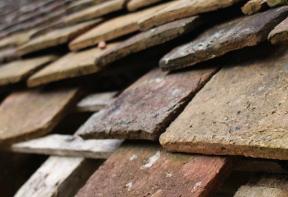Blowing down the house
Learn about the science behind housing construction and watch the video!
When Greg Kopp and his team realized that the roof wasn’t going to fly off, despite all the pressure it was under, they decided to go in the house. The building in London, Ont., is your average two-storey house constructed to code. It has a furnace and electricity. However, the decor on the inside is, well, non-existent. The house was created for abuse in the name of science and better building practices. The project is called Three Little Pigs.
Last August, Kopp, the principal investigator for the tests, and his team from the University of Western Ontario conducted the most realistic hurricane test ever done in a laboratory setting at the Insurance Research Lab for Better Homes. They applied a wind-loading system to the entire roof. The system uses air boxes to put pressure on the roof to mimic the effects of high Category 3/low Category 4 winds.
The testers took the house to the point at which all of the toe nails–the fasteners that connect the trusses to the walls–failed. The surprising find wasn’t that the roof lifted the way it did, but how it failed. It’s thought that a large structure, such as a full-sized house, wouldn’t respond to gusts of wind that last for a second or less. But the simulated gusts that the researchers passed over the roof affected the toe nails instantly.
So, what do the findings from this experiment mean for the DIYer adding on to his house or the contractor putting up a new one?
“The details really matter,” Kopp says. “The nails and where they go in need to be at the right place. With wind, it’s not the wood that breaks; it’s the nails that pull out. If the nails aren’t in anything or if they’ve cracked the wood, then you are going to have some serious problems. When you see failures in Canada, it’s usually because things weren’t nailed or connected properly.”
While Kopp and his team have made some significant findings, they aren’t finished popping the lid off the house. For their next experiment, they are going to reattach the roof with load cells in place of the toe nails. The ultimate goal is data that the researchers can use to analyze other types of houses through computer modelling; that way, they don’t have to unleash their big bad wolf of a system on other structures.
To leave a comment, please log in












No comments